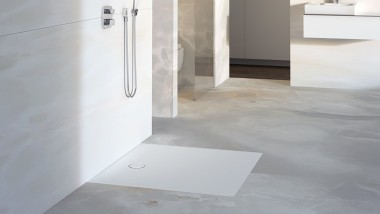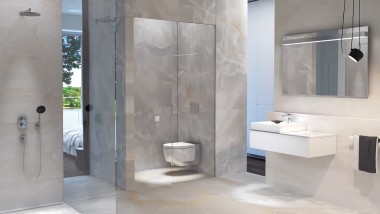Tricks for fresh air in the bathroom
Every bathroom is different – but the problems are the same. A bathroom can smell unpleasant, and not only after the toilet has been used. Too much moisture, a defective ventilation system or a blocked drain can also cause stench in the bathroom. Various methods help get fresh air back into the bathroom depending on the particular problem. The following tricks and household remedies are among the most effective.
How to ensure fresh air in the bathroom?

1st tip: household remedies help
Simple remedies can be useful for temporarily masking unpleasant odours after you’ve been to the toilet. Burning matches, for example, drown out the stench thanks to the sulphur they contain. The most widespread tricks include fragrant sprays, incense sticks and oils. An open bowl of vinegar or lemon water and freshly ground coffee beans are said to have a binding effect on odours. The same is true of a small dish of salt. This household remedy can neutralise odours because of its moisture-binding effect.
2nd tip: using new developments
If you want to plan ahead and eradicate unpleasant odours in the bathroom after using the toilet permanently, it is best to opt for innovative and effective variants such as a toilet with an odour extraction unit. This can extract odours quickly after you’ve used the toilet and close to their point of origin, before they spread throughout the room. The principle is similar to the function of an extractor fan in cooking. In the bathroom, the options range from odour extraction integrated in the ceramic appliance to a module in the cistern, an integrated freshness filter such as the DuoFresh module.
3rd tip: drying daily
If moisture and heat build up in a room over a long period of time, the bathroom can smell unpleasant despite ventilation. This could even lead to mould forming. The best idea is to make it a routine to dry damp areas such as taps and the joints between tiles with a cloth after every shower or bath. Towels and linen in the bathroom can also become damp over time and should therefore be exchanged or washed regularly.
4th tip: of course. Ventilating!
Ventilating the place has proven to be a quick and effective means of exchanging humid air with fresh air. If you air your bathroom regularly, you can help prevent mould from forming. For ecological reasons, the window should not be left open for hours during the winter months, as you will otherwise unnecessarily waste heating energy. Ventilation is particularly effective when open windows cause a draught. To do this, it is best to open the bathroom window and the door as well as a window in another room so that the moisture can escape quickly. If you don’t have a window in the bathroom, switch the ventilation unit on for a while. You can also open the bathroom door and a window in the room opposite. To ensure the humid air leaves the premises and does not accumulate in other rooms, doors to other rooms should remain closed.
5th tip: replace the ventilation filter
In bathrooms without windows, a ventilation unit installed by default is known to help eliminate unpleasant odours. The unit’s performance determines whether and how fast the air in the bathroom is fresh again. If, however, the ventilation is outdated or broken, it can also actively cause unpleasant odours in the air. You may experience unpleasant smells in the bathroom if the filter is blocked or the ventilation defective. Instead of fresh air being brought in, the defective unit brings the unpleasant air back into the bathroom. Whatever the situation: cleaning, maintenance and possibly a new product are certainly worth your while.
6th tip: clean the trap
The unpleasant odours might actually come from further down: for example if a trap or drain is blocked. A plunger is useful for loosening residues by alternately creating positive and negative pressure.




